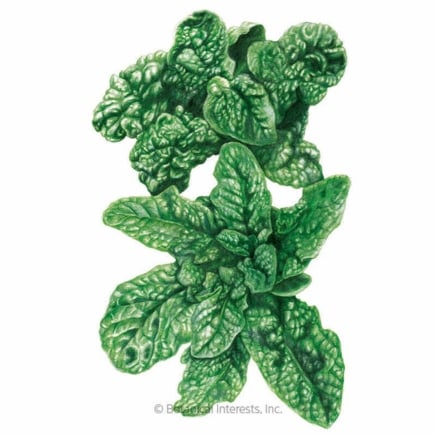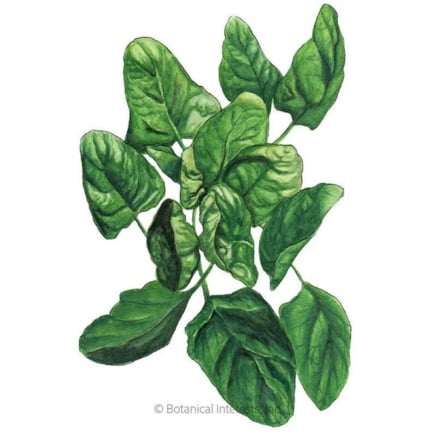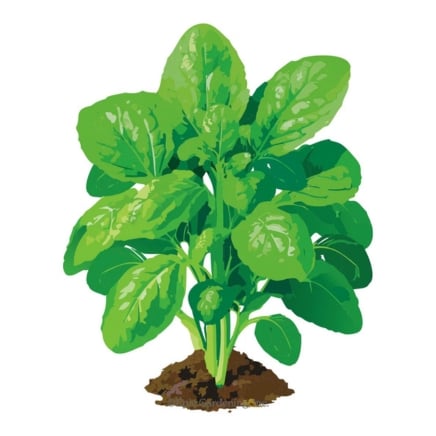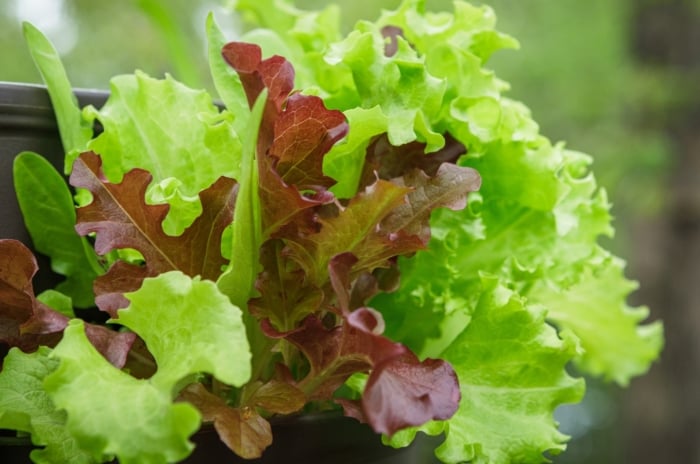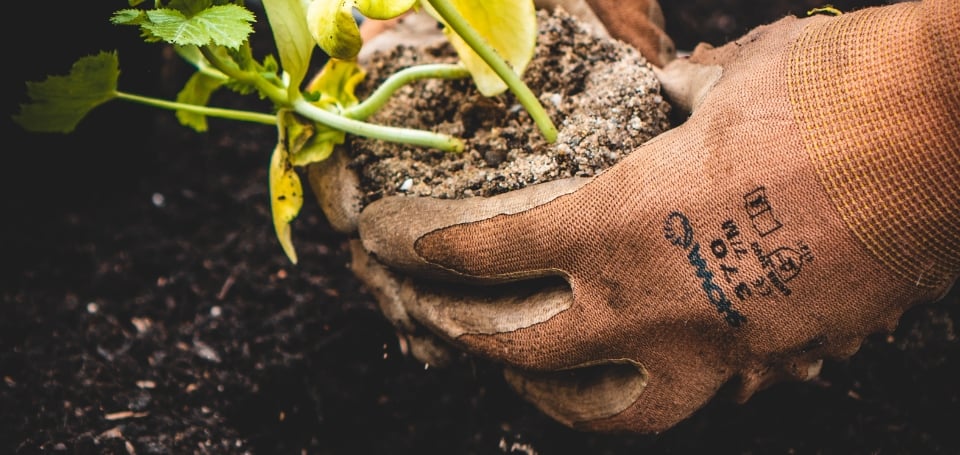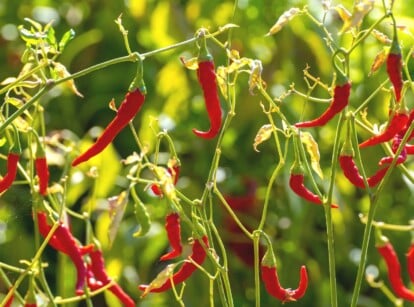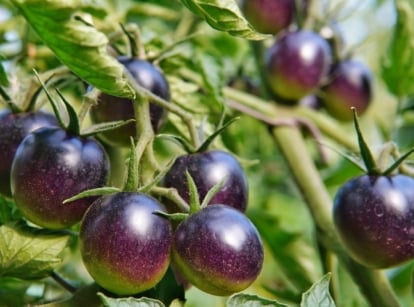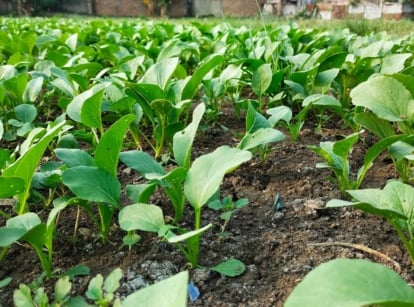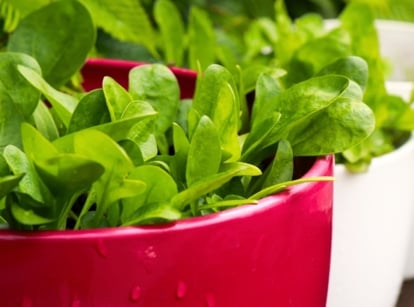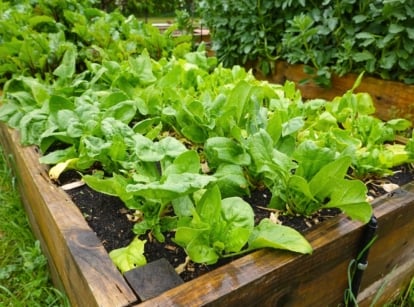9 Spinach Alternatives That Won’t Bolt in the Heat
Spinach is a supreme leafy green; its leaves are tender, nutritious, and slightly crunchy. Though they’re excellent to eat, they’re challenging to grow under the summer heat. Consider cultivating one of these nine heat-tolerant alternatives from seasoned grower Jerad Bryant.

Contents
Leafy greens are essential in the kitchen garden! Crops like lettuce, chard, and spinach allow for tender, tasty salads and mouth-watering casseroles. They’re also easy to grow and quick to mature, giving you the most bang for your buck in the garden.
If you love this veggie and can’t consider an alternative, try growing heat-tolerant and bolt-resistant cultivars. ‘Bloomsdale’ is one such variety that resists bolting in spring and summer. It grows wrinkly, large foliage that holds up well against increasing temperatures and direct sunlight.
These are some other bolt-resistant spinach varieties for the home garden:
- ‘Lavewa’
- ‘America’
- ‘Tyee’
- ‘Akarenso’
- ‘Space’
- ‘Crocodile’
If you’re feeling adventurous, why not grow an alternative? Not all of these crops aren’t true spinach, but they’re tasty and nutritious leafy greens that hold up well in summer. You won’t have to worry about bolting, bitter-tasting foliage, or crop protection. With these veggies, you’ll enjoy ample fresh greens throughout the growing season!
New Zealand Spinach

|
|
common name New Zealand Spinach |
|---|---|
|
|
botanical name Tetragonia tetragonioides |
|
|
sun requirements Full sun |
|
|
height 1-2’ |
|
|
hardiness zones 8-11 |
This spinach plant alternative is a member of the ice plant family Aizoaceae. It’s hardy, low-growing, and perfect for summer gardens. New Zealand spinach spreads along the ground, forming dense groundcovers with edible, crunchy greens. It’s an evergreen perennial in warm zones without winter frost and a tender annual in all other regions.
This alternative is perfect for containers; it’ll cascade over the pot edges to create a lovely ornamental effect. It’s also ideal for raised beds, as the searching tendrils spill out the bed’s walls and make use of the vertical space.
When planting, grant each specimen some space so they can spread out. Plant seeds in spring after the last average frost date, and thin seedlings so they’re a foot apart. To harvest, snip the tips of the stems with some leaves attached. New sprouts will shoot up from the cut wound.
Malabar Spinach

|
|
common name Malabar Spinach |
|---|---|
|
|
botanical name Basella alba |
|
|
sun requirements Full sun |
|
|
height 3-10’ |
|
|
hardiness zones 10 |
Malabar spinach is like the New Zealand type; it has climbing, rooting stems that sprout tender green leaves in the middle of spring or summer. This cultivar is tolerant of heat and hardy under direct sunlight, making it an excellent choice for small or large gardens in warm regions.
Not only are alternative spinach greens delicious, but the plant itself is highly ornamental! The stems are bright purple-red, the leaves are shiny green, and the flowers are small clusters of white and red petals. Grow this in a flower bed for edible vines, or let it creep along the ground in a veggie plot.
You may also train this variety to grow up a trellis to save you planting space in the beds. Simply have the tendrils climb fences, supports, or other plants like corn and okra. To harvest, snip individual greens off any of the stems.
Aztec Spinach

|
|
common name Aztec Spinach |
|---|---|
|
|
botanical name Chenopodium berlandieri |
|
|
sun requirements Full sun |
|
|
height 2-5’ |
|
|
hardiness zones 2-12 |
Aztec spinach is native to parts of the U.S.! It’s an ideal species for growers who love native plants. Though less showy and ornamental than New Zealand and Malabar spinach alternatives, this type is vigorous and hardy—some people call it a weed!
It is weedy, as it readily reseeds itself throughout your yard for a continuous crop. Let it grow wild, or pull up the young seedlings and prepare them in salads or cooked recipes. Harvest the young leaves for the best flavor.
This variety may grow perennially in warm climates, though it more often thrives as a reseeding annual. Save its seeds at summer’s end in cold regions. That way, you can sow the crop next year.
Water Spinach

|
|
common name Water Spinach |
|---|---|
|
|
botanical name Ipomoea aquatica |
|
|
sun requirements Full sun |
|
|
height 6-12” |
|
|
hardiness zones 10-12 |
A close relative of morning glories and moonflowers, water spinach is a vining herbaceous specimen with morning-glory-like blooms and arrowhead-shaped leaves. It can grow in soil or water, as it’s a semi-aquatic plant that thrives with continuous moisture.
This plant will survive in adverse growing conditions but sprouts bitter, tough greens instead of tender, tasty ones. For the most tender leafy greens, keep the roots cool and moist during the summer. Snip the newest ones off the vines, as they taste better than old, mature foliage.
This vine is a noxious weed in certain states; it competes with native plants, pushes them out, and creates monocultures in the wild. It promotes mosquito breeding when it grows in pools of standing water. Plant a different alternative in Texas, Florida, California, Virginia, the Carolinas, Minnesota, and nearby states.
Swiss Chard

|
|
common name Swiss Chard |
|---|---|
|
|
botanical name Beta vulgaris subsp. vulgaris |
|
|
sun requirements Full sun to partial shade |
|
|
height 1-2’ |
|
|
hardiness zones 2-11 |
Swiss chard sprouts lush, wrinkly leaves that resemble beet greens. It’s a close relative of beets that growers cultivate for edible foliage rather than bulbous roots. Long, crunchy stems and tender greens offer two uses in a single plant.
Chop the stems into small pieces and treat them like celery. They cook well in sautés and are perfect for pickling or fermenting. The greens taste great fresh, though I like to cook them in recipes. They have a slightly bitter flavor that goes away after you blanch them.
Dozens of chard cultivars offer the ultimate selection for home gardeners. One such variety, ‘Perpetual Spinach,’ sprouts tender, thin-ribbed leaves that are more palatable than other types of chard.
Collards

|
|
common name Collards |
|---|---|
|
|
botanical name Brassica oleracea var. viridis |
|
|
sun requirements Full sun to partial shade |
|
|
height 2-3’ |
|
|
hardiness zones 2-11 |
Collards are one of the best leafy green crops to try in warm climates! They’re bolt-resistant, heat-tolerant, and they love direct sunlight. Close relatives of broccoli, cabbage, and kale, collards have a similar taste and growth habit as their relatives. They sprout thick stems with lush, long, and wide green-gray leaves.
Collards are a favorite of many gardeners because they’re also frost-tolerant! They resist light frosts in cold gardens. Use them as a spring, summer, or fall crop.
Collards have a few different uses. Steam mature leaves, blanch and sauté them, or pick the young greens for fresh eating. One clever use is to make wraps with large collards. Blanch them first, then place cabbage, tofu, and carrots inside for a delicious, healthy wrap that doesn’t require a tortilla.
Amaranth

|
|
common name Amaranth |
|---|---|
|
|
botanical name Amaranthus spp. |
|
|
sun requirements Full sun |
|
|
height 1-6’ |
|
|
hardiness zones 2-11 |
Amaranth is an age-old crop that many historical civilizations cultivated and consumed. It sprouts edible foliage, nutritious seeds, and stunning blooms! Resistant to drought and heat, amaranth excels as an annual during the warm months.
A new, special cultivar offers tender, reddish leaves for fresh eating. ‘Edible Red Leaf’ amaranth is its name, and it’s a fitting name! The red leaves are tender, slightly crunchy, and delicious. They readily mature from spring through fall until the weather cools.
If you’d like seeds, let the plants mature and flower. Seeds form shortly after the flowers appear; they’re tiny, light brown, and prolific! Collect them by cutting off the spent flower spikes. Place them upside down in a paper bag and let them hang dry; as they dry, the seeds fall into the bag, so you can easily collect them.
Squash Leaves

|
|
common name Squash Leaves |
|---|---|
|
|
botanical name Cucurbita spp. |
|
|
sun requirements Full sun |
|
|
height 1-3’ |
|
|
hardiness zones 3-11 |
If you’re already growing squash this year, you’ll have free, edible leaves. Squash foliage is edible, tender, and tasty! The flowers, foliage, and new growth tips taste great mixed with scrambled eggs or in a casserole.
Because squash foliage has tiny little barbs that can be unpleasant to eat, it’s best to prepare it before consuming it. Braise, sauté, or boil greens and tips for a minute or less. They wilt quickly once they hit the heat, much like spinach does.
Select a few leaves from each plant when harvesting, and avoid overharvesting a single specimen. Picking too many can cause poor growth and squash formation. Avoid harvesting more than one-third of a plant at a time, and let it recuperate before harvesting from it again.
Sweet Potato Greens

|
|
common name Sweetpotato Greens |
|---|---|
|
|
botanical name Ipomoea batatas |
|
|
sun requirements Full sun to partial shade |
|
|
height 6-10’ |
|
|
hardiness zones 9-11 |
Like squash, sweet potatoes sprout edible greens that can be used as spinach alternatives! Plant slips in early spring for a fall root harvest and eat the leaves in the growing seasons. They’re thin, delicious, and easy to cook. Prepare them how you would water spinach, as the two plants are in the same plant genus, Ipomoea.
Sweet potatoes thrive under direct sunlight all day and need lots of heat to form their tuberous roots. You may plant them in the shade if your only goal is to cultivate edible foliage; otherwise, you’ll want to grant your specimens as much sunlight as possible.
Harvest the leaves individually from mature vines. The young leaves are more tender and tasty than the older ones, though you may use both to cook with.

